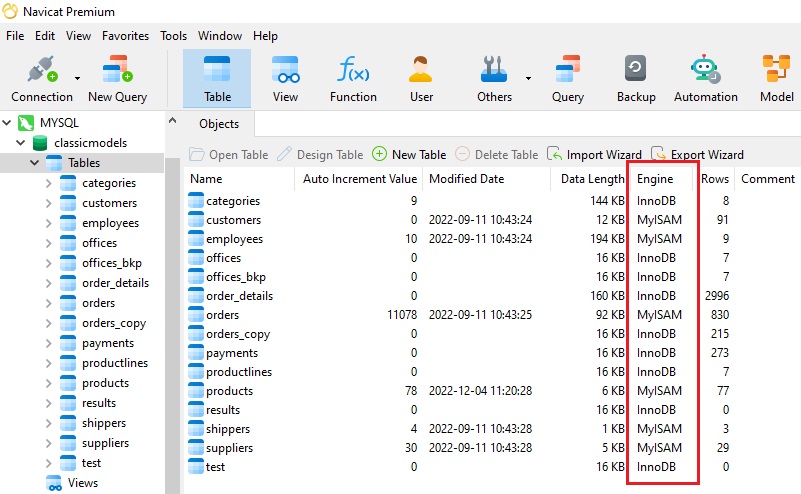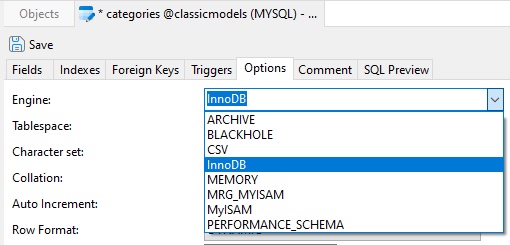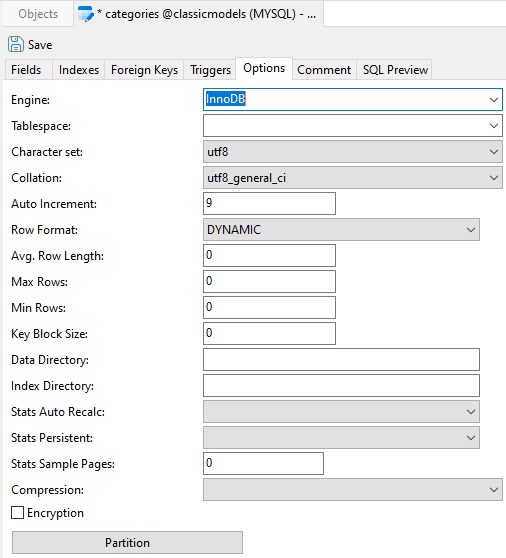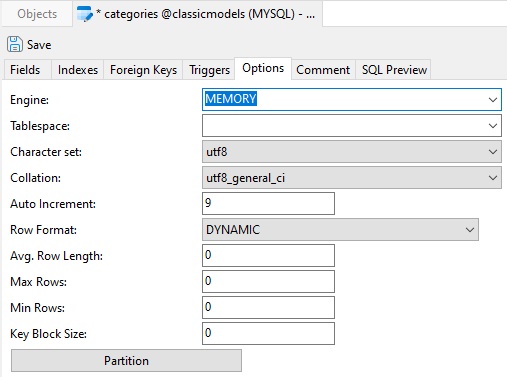MySQL, one of the most popular relational database management systems, offers a variety of storage engines, each designed to cater to specific needs and use cases. When it comes to optimizing your database performance and ensuring data integrity, selecting the right storage engine is crucial. In today's blog, we'll explore the key factors to consider when choosing a storage engine for your MySQL tables.
Understanding Storage Engines
MySQL supports multiple storage engines, each with its own set of features, strengths, and weaknesses. The storage engine is responsible for handling the storage, retrieval, and management of data in the database tables. While InnoDB and MyISAM are by far the most commonly used engines, there are several others to consider.
Consider Your Usage Patterns
The first step in choosing a storage engine is understanding your specific usage patterns. Different storage engines are optimized for various scenarios. Choices include:
- InnoDB: This is the default storage engine for MySQL and is well-suited for applications with high write-intensive workloads and transactions. InnoDB provides ACID compliance, ensuring data consistency and reliability.
- MyISAM: If your application has more read-intensive operations and doesn't require transactions, MyISAM might be a good choice. It performs well for scenarios like data warehousing and read-heavy reporting.
- MRG_MyISAM: A merge storage engine that allows you to create tables that are a collection of other MyISAM tables. Useful for managing large datasets spread across multiple tables.
- MEMORY: This storage engine stores all data in RAM, making it ideal for scenarios where fast access to data is critical. However, it's important to note that data stored in the MEMORY engine is volatile and doesn't persist across server restarts.
- Blackhole: Acts as a "black hole" where data is accepted but not stored. Useful for scenarios where you want to replicate data to other servers without actually storing it locally.
- CSV: Stores data in text files using the CSV format. Suitable for data exchange between databases and applications that use CSV files.
- Performance_Schema: A storage engine that provides performance-related information about server execution at runtime. Helpful for monitoring and optimizing performance.
- ARCHIVE: This engine is optimized for storing large amounts of data with minimal space requirements. It's suitable for archiving purposes where fast data retrieval is not a primary concern.
Comparing InnoDB to MyISAM
Since InnoDB and MyISAM are the most popular storage engines, let's take a moment to consider each engine's strengths and weaknesses in terms of transactional capabilities, data integrity, reliability, and performance.
If your application involves complex transactions and requires features like rollbacks and savepoints, InnoDB is a strong candidate. It provides full ACID compliance, ensuring that transactions are handled reliably. On the other hand, if your application doesn't rely heavily on transactions and can tolerate occasional data inconsistencies, a storage engine like MyISAM may be more suitable. MyISAM doesn't support transactions to the same extent as InnoDB, but it can perform well for read-heavy workloads.
For applications where data integrity is paramount, InnoDB is often the preferred choice. InnoDB uses a clustered index and supports foreign key constraints, ensuring referential integrity between tables. This is crucial for applications where maintaining data consistency is a top priority. If your application can tolerate a lower level of data integrity, MyISAM might be considered. MyISAM doesn't support foreign key constraints and is more prone to table-level corruption in the event of a crash. Therefore, it's essential to weigh the trade-offs between performance and data reliability.
Performance is a critical factor in choosing a storage engine. InnoDB is known for its excellent performance in write-intensive scenarios due to its support for multi-version concurrency control (MVCC). It uses row-level locking, reducing contention and allowing for better concurrency. MyISAM, on the other hand, excels in read-intensive workloads. It uses table-level locking, which can impact concurrency in write-heavy scenarios but allows for faster read operations.
Selecting a Storage Engine in Navicat
Since each table can have its own storage engine in MySQL, Navicat displays it in the Table Objects Explorer, along with other pertinent information, such as the latest Auto Increment Value, last Modified Date, Data Length, and number of Rows:

To set or change a table's storage engine, open the Table Designer and click on the Options tab. There you'll find a drop-down of supported Engines as well as a number of other relevant fields:

Different storage engines come with their own attributes, so the other configurable options will depend on the Engine you choose. For example, here are the fields for the InnoDB Engine:

Meanwhile, the MEMORY Engine offers fewer configuration options:

Conclusion
Selecting the appropriate storage engine for your MySQL tables is a critical decision that directly impacts your application's performance, reliability, and scalability. By carefully considering your usage patterns, transactional requirements, data integrity needs, performance considerations, and exploring specialized storage engines, you can make an informed decision that aligns with your organization's goals.












